In 1992, Pulitzer Prize-winning poet Mary Oliver published a selection of her works that included a poem titled “Rice.” In the final stanza, she speaks directly to the reader:
I don’t want you just to sit down at the table.
I don’t want you just to eat, and be content.
I want you to walk out into the fields
where the water is shining, and the rice has risen.
I want you to stand there, far from the white tablecloth.
I want you to fill your hands with mud, like a blessing.
It has been three years since Oliver’s death, 30 years since the publication of this poem, and 70 years since Italy faced a drought as severe as the one that it is currently experiencing. According to the National Research Council’s Institute of Atmosphere and Climate Science, precipitation levels in Italy for the first seven months of this year were 46% lower than the average for this period in 1991 to 2020, putting 2022 on track to be the driest year on record since the organization first began collecting data in 1800.
In 2022, the rice has not risen on many farms. Across Italy, the water is not shining, having slowed to a murky trickle over the summer as the country’s rivers dried up, its snow reserves disappeared, and its rice fields withered. Farmers’ hands, rather than filled with blessed mud, were pressed dryly together in prayer for months.
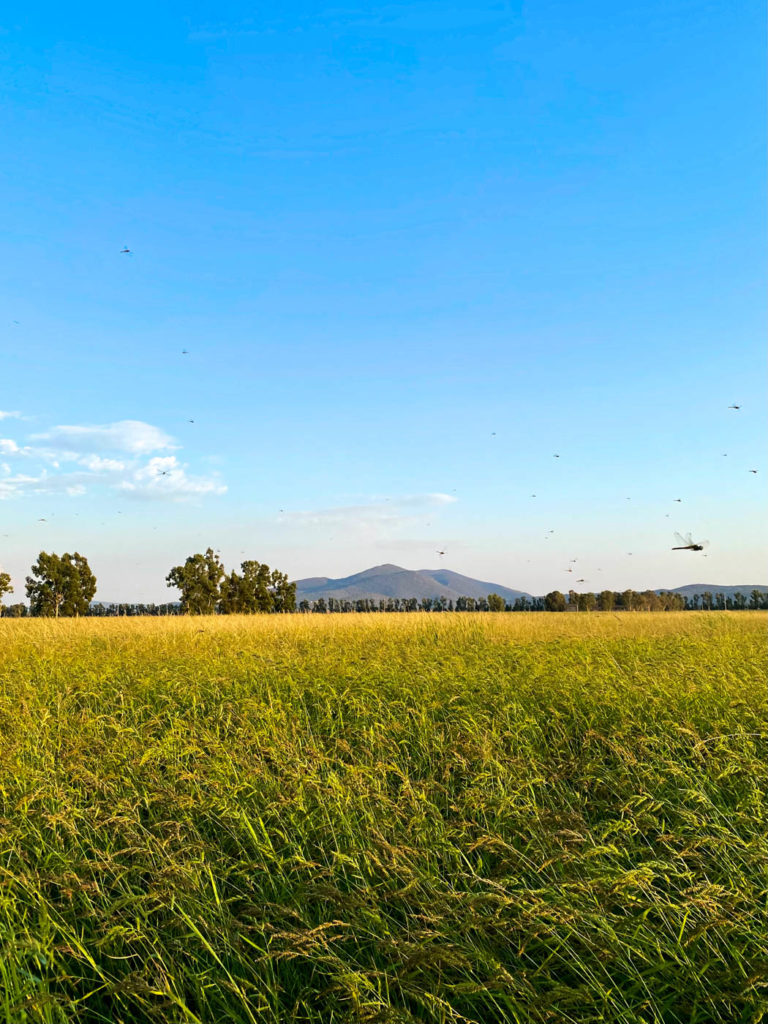
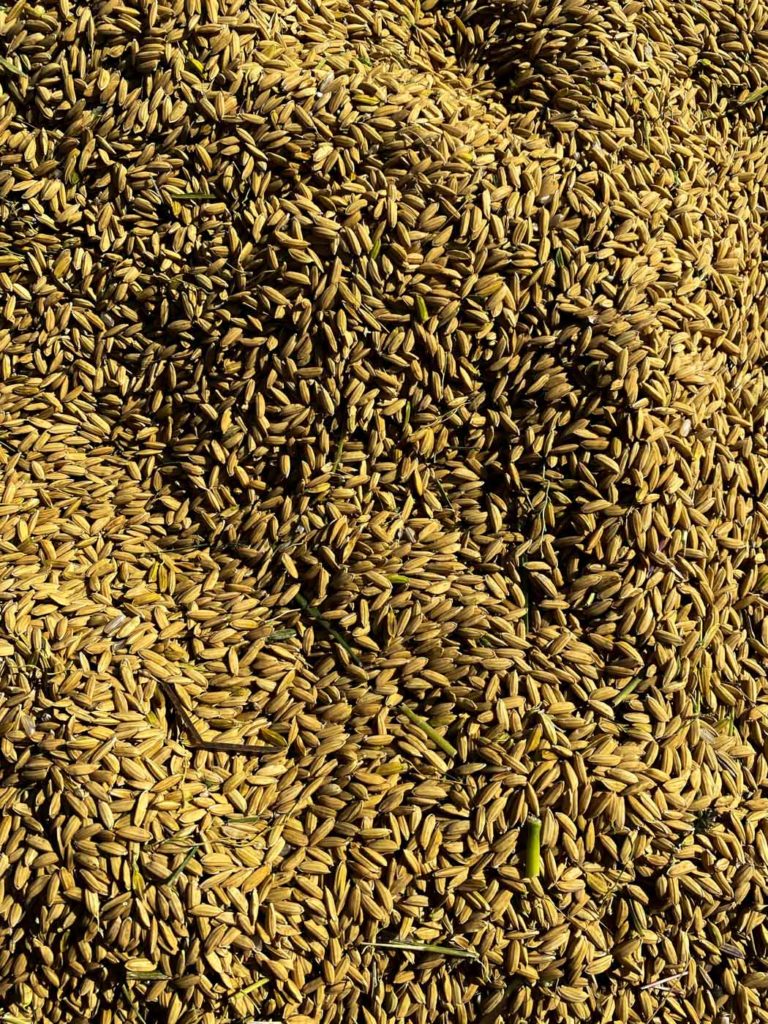
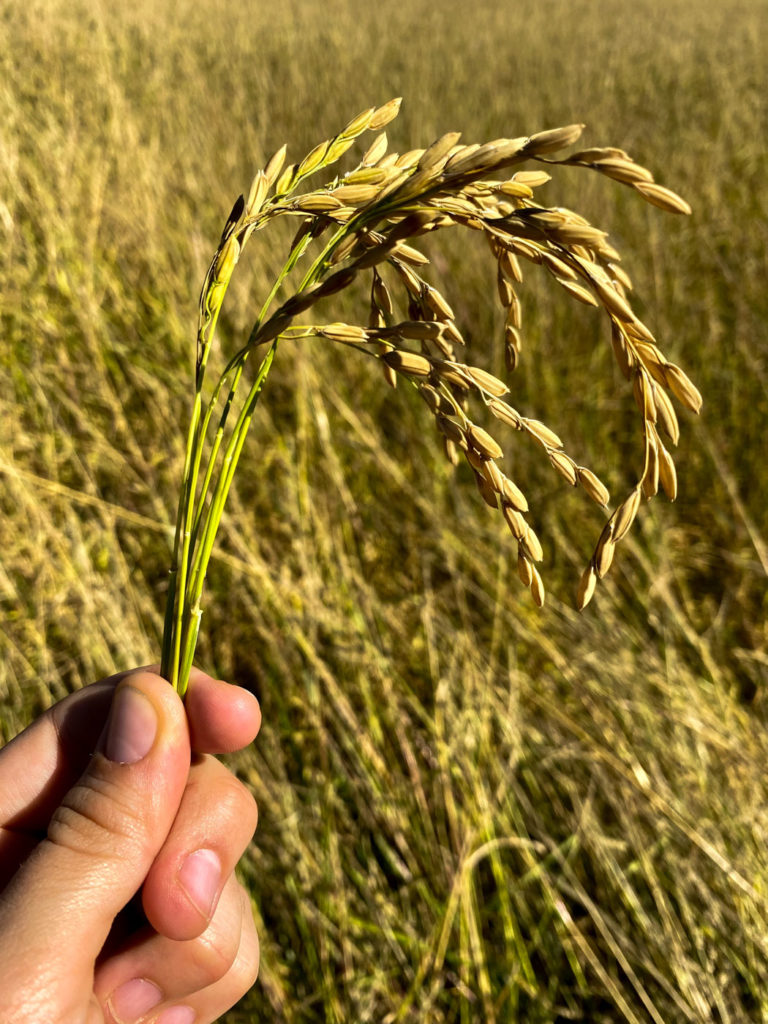
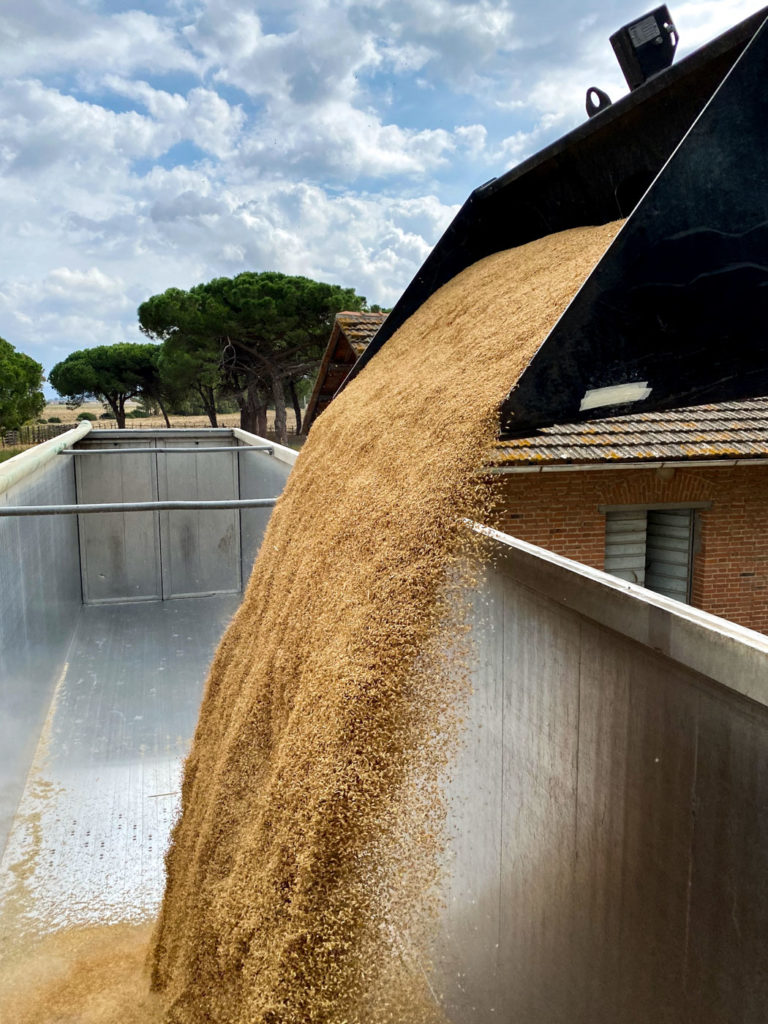
Italy—although generally associated with the production and consumption of other grains, such as wheat, for all those pastas and pizzas—is the European Union’s primary rice producer, and rice is a key ingredient in many traditional Italian dishes, such as risotto and arancini. About 90% of all Italian rice is produced in two of its northern regions, Lombardy and Piedmont. Both are among the five regions included in the Italian government’s declaration of a state of emergency resulting from the drought, announced on July 4, 2022.
I began to feel concerned about the drought in early May, just before the planting of rice in Italy—an important annual event in my life during these past six years working at Tenuta San Carlo, an organic rice farm located in the region of Southern Tuscany known as Maremma.
Ariane Lotti, who is the fourth generation in her family to manage Tenuta San Carlo and was responsible for transitioning the farm to organic agriculture—making it the only rice farm in Tuscany that is both organic and woman-run—informed me that a friend of hers and fellow rice farmer, Fabrizio Rizzotti, might not have access to enough water from his local water district to plant rice this year. For Rizzotti, this would mean the loss of his primary source of income and a disruption in his family’s multi-generational legacy of rice farming. Although this may seem like a tragedy that affects just one farmer, along with his family and employees, the consequences are much further reaching; losing just one farm’s rice crop makes food less available and more expensive for everyone in our global food system.
Lotti and I were alone in the Tenuta San Carlo rice fields on that day in May, hundreds of kilometers south of Rizzotti’s farm. She explained to me that the drought would affect Maremma differently, that this marshy region of Central Italy is better equipped to handle dry years due to its underground water infrastructure. She opened the floodgates that act as the farm’s only source of irrigation—one by one through an act of exhausting manual labor—and water gushed into the rice fields to prepare them for planting. It flowed for hours, until the water covering all 35 hectares was ankle-high.
Fresh water is essential for the cultivation of carnaroli, the rice variety best suited for risotto. According to the traditional agricultural practice used in much of Italy, the seed is planted directly into a few centimeters of standing water, which protects it during its delicate first few days after germination, preventing weed growth and insect damage. From the time of planting in mid-May to the time of harvest in late September, more water is needed to flood the fields as the plants grow.
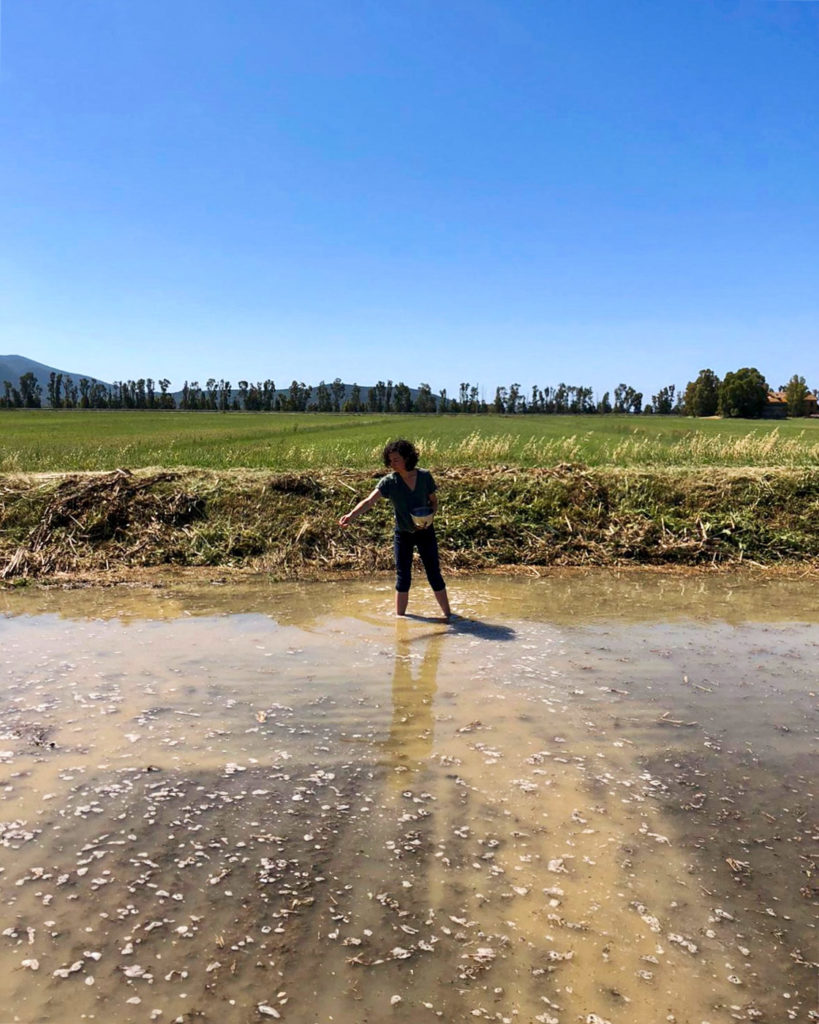
The following day, I watched the seeds spray into the water in the wake of a tractor outfitted with steel wheels, and my mind returned to another moment, years ago—the first time I walked barefoot into the rice fields before harvest. The water rose up to mid-thigh height then, with the rice plants reaching above it in gold-green arches. It was a hot day in late August, but the water was cool and so was the silky mud that enveloped my toes. I could feel frogs clumsily bump against my calves and the rapid beat of dragonfly wings near my ears. The air was filled with the swishing sound of the grains moving in the wind and the songs of countless aquatic birds.
It was a pivotal moment for me, in which I came to truly understand that food is life—not just for humans at the time that we consume it, but for all the creatures that live among the crops.
A few years and a few days later, in May 2022, I stepped barefoot into the muddy fields again. I volunteered to help plant a small plot of land to see if another rice variety could thrive here. It was morning and not yet summer, but the sun shone intensely already—a precursor to the heatwaves to come—as I waded through the field, tossing handfuls of rice into the water as rice farmers have done for millenia.
Rice cultivation first took place on the Italian peninsula six centuries ago. Since then, it has become an integral part of Italian culinary and agricultural traditions. This year may mark the end of an era and the loss of those traditions.
Tenuta San Carlo—unlike many rice farms this year—had crops in the field to harvest in October, but Lotti counts herself among those considering whether to transition to growing other grains. This would be an expensive, as well as emotional, choice. But it may be the only option if Italy continues to face a situation of such extreme water scarcity.
For now, there is rice on supermarket shelves and risotto at restaurants, but the moment has passed for us to sit down at the table, eat and be content. Now, it is time to heed Oliver’s words, to conserve water, and to take better care of the land and farmers that feed us.
While we cannot all walk out into the fields where the remaining rice rises, we can and must recognize that our footprints appear in the mud regardless.

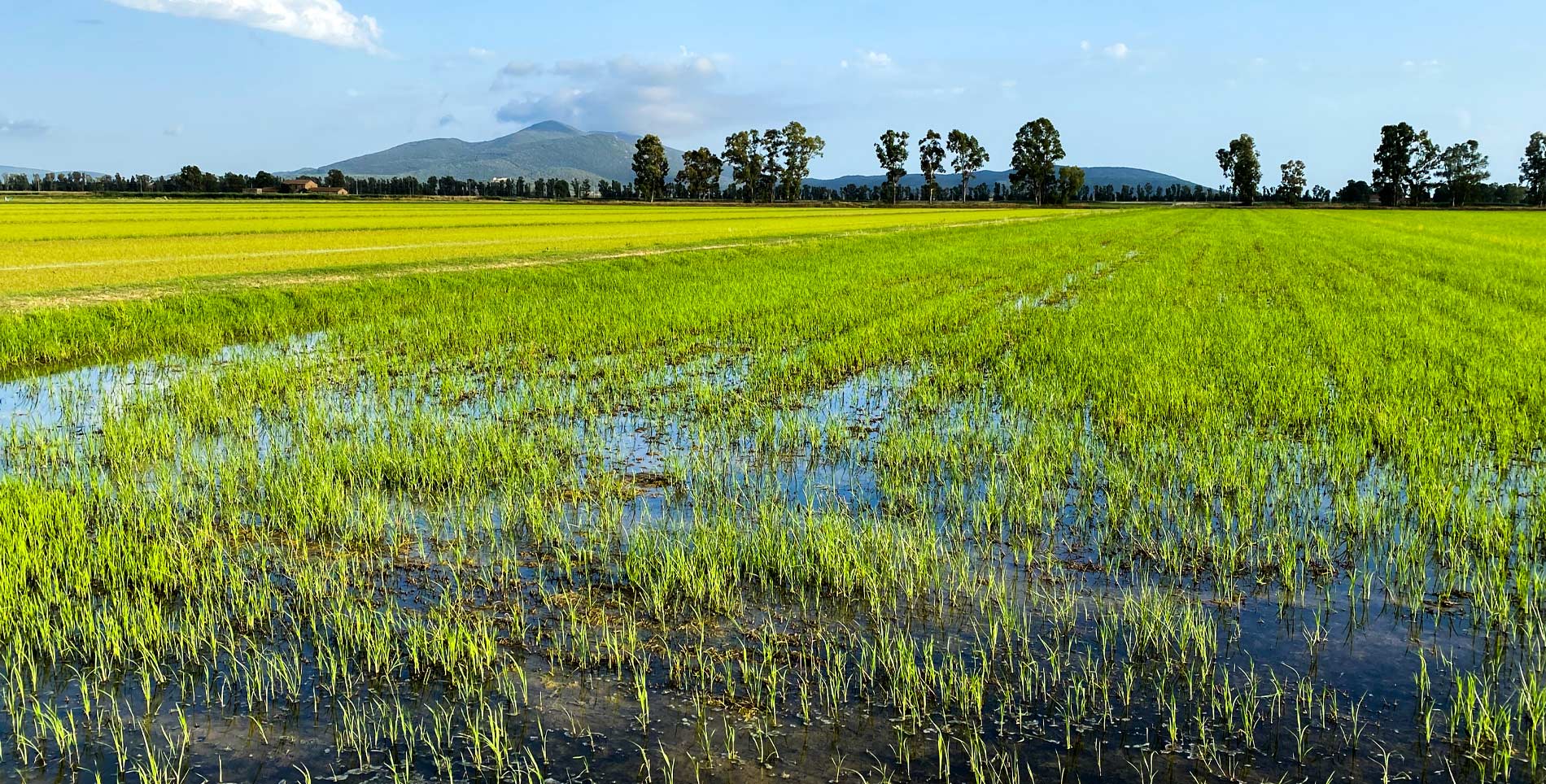

Our comments section is for members only.
Join today to gain exclusive access.